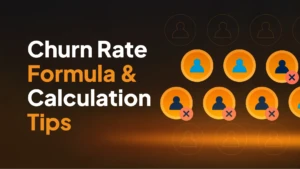As membership businesses grow and diversify, so do the needs and expectations of their members.
A one-size-fits-all pricing model often falls short in addressing the varied preferences and budgets of today’s customers.
That’s where tiered pricing comes in. What is a tiered pricing strategy? It offers a flexible, scalable approach that not only increases revenue but also enhances member satisfaction.
In this article, we’ll explore what tiered pricing is, how it works, its key benefits, and pricing tier examples. We will also discuss how to design and implement a successful tiered pricing strategy using tools like Member Solutions.
TL;DR
- Tiered pricing is a pricing model where services are offered at different levels based on features or usage.
- It increases revenue by appealing to multiple customer segments.
- A well-designed tiered pricing structure enhances perceived value and supports upselling.
What Is Tiered Pricing?
What is the tiered pricing method? The tiered pricing definition is essentially a pricing strategy where different levels (or “tiers”) of a product or service are offered at escalating prices, each with increasing features, usage limits, or benefits.
The tier pricing model is straightforward: it categorizes offerings based on price and value. The concept of tiered pricing lies in offering a range of choices for customers and maximizing revenue across different segments.
This method is particularly beneficial for membership businesses that cater to diverse customer needs.
How Does Tiered Pricing Work?
In a tiered pricing structure, each pricing level represents a specific bundle of services, privileges, or usage quotas. Customers select the tier that best aligns with their goals and budget.
As a member’s needs evolve, they can transition between tiers, providing flexibility without requiring them to leave the program.
This makes the model dynamic and responsive, especially when integrated with a management system like Member Solutions that can handle multiple access levels, billing schedules, and member communications.
5 Benefits of Tiered Pricing
Membership businesses and their customers can benefit significantly from introducing a tiered pricing system. Let’s take a look at five of the main advantages of tiered billing and tier prices.
1. Targets diverse customer segments
Tiered pricing allows businesses to serve both entry-level users and high-value customers without alienating either. Basic tiers can attract cost-conscious prospects while premium tiers cater to those seeking advanced or exclusive offerings. This segmentation can improve customer satisfaction across the board.
2. Increases perceived value
When each tier clearly outlines its benefits, members can see the tangible value of upgrading. A well-designed pricing page or tier matrix demonstrates what’s gained at each level, making higher tiers appear more compelling. This psychological contrast increases the likelihood of upsells.
3. Boosts revenue
Offering multiple tiers taps into a broader customer base and encourages customers to move to higher-priced plans over time. With a thoughtful tier structure and effective messaging, it becomes easier to maximize customer lifetime value. Tiered models can increase average revenue per user by capturing the willingness to pay more without losing budget-conscious users.
4. Improves customer retention
When customers can upgrade rather than outgrow a service, they’re more likely to stay. Tiered pricing provides a built-in mechanism for retention by offering pathways to additional value. Customers feel like their membership evolves with them rather than becoming stagnant. Managing payment issues efficiently is essential—learn how to collect past due invoices without damaging member relationships.
5. Encourages upselling
Tiered pricing makes upselling a natural part of the customer journey. When higher tiers offer logical, necessary additions, members often upgrade without needing aggressive sales tactics. Promotions, milestone rewards, or feature previews can ease the transition.
Tiered Pricing Examples
Let’s take a closer look at some pricing tiers examples when applied to membership businesses.
1. SaaS and digital tools
Tools like Dropbox or Canva offer freemium and multi-tier paid plans based on features such as storage, support, or team collaboration. Users begin with free or low-cost options, and as their needs expand, they’re incentivized to upgrade. Each level delivers incremental value in a predictable way.
2. Subscription services
Netflix or Spotify use three-tiered pricing models to offer differentiated experiences: limited basic access, standard plans with added features, and premium plans with all-inclusive options. Each is designed to cater to a specific user type. As preferences and budgets vary, customers can shift tiers to find the right value.
3. Membership-based businesses
Gyms, coaching programs, and online communities often provide access tiers—such as drop-in, standard, or VIP membership—each with its own set of benefits. A martial arts school may offer basic training tiers, a family plan, and an elite tier that includes competitions and seminars. These businesses often rely on the membership management software to efficiently manage members across tiers.
How Is Tiered Pricing Calculated?
Effective tier pricing starts with understanding both your internal costs and your members’ perceived value.
Begin by calculating direct costs (e.g., time, facilities, content) and indirect costs (e.g., admin, tech support).
Then, assess what customers are willing to pay at each level, perhaps using surveys or A/B testing.
How to Build a Successful Tier Pricing Strategy for Your Membership Business: 5 Steps
Looking to implement a tiered payment structure into your membership business? Follow these five steps to success:
1. Know your audience
Utilize member data, surveys, and engagement metrics to comprehend the distinct needs and values of various groups. Segment your audience based on behavior, interests, or stage of engagement. Tailoring your tiers to these segments ensures you’re solving the right problems at the right price.
2. Define your goals
Your tier strategy should reflect whether you’re optimizing for acquisition, revenue, retention, or engagement. Clear goals will guide your tier structure and pricing decisions. For instance, lower-priced tiers may prioritize growth, while higher ones focus on margin.
3. Choose a tier model
Pick a structure that fits your audience—popular models include “Good/Better/Best,” usage-based, or feature-limited tiers. Don’t overcomplicate it; clarity leads to conversion. Three to four tiers are typically ideal to avoid choice paralysis.
4. Set your price points
Test different pricing levels based on your audience’s budget and their perception of value. Utilize competitor research and pilot programs to pinpoint areas of opportunity. Ensure each price jump is justified by clear, desirable benefits.
5. Test and optimize
Launch your tiers in phases and collect qualitative and quantitative feedback. Track upgrades, downgrades, and churn to understand how well your structure is performing. Adjustments should be made based on this data over time.
Best Practices for Tier-Based Pricing Implementation
It’s important to follow these best practices when implementing tiered pricing into your membership business.
1. Assign each tier a clear role
Design each tier with a specific audience and purpose in mind. Whether it’s for beginners, long-time members, or high spenders, clarity helps both you and your customers. This role-based structure enables better marketing and service delivery.
2. Keep it simple
Too many tiers or overly complex differences can overwhelm your prospects. Aim for a structure that is intuitive and quick to understand. Clear visual layouts and value comparisons are most effective.
3. Use behavioral nudges
Highlight your most popular tier, offer time-limited upgrades, or show what others have chosen to influence decisions. Smart design can guide users toward higher-value tiers. Automate communication and reduce churn by using well-timed payment reminder emails as part of your tiered pricing strategy.
4. Monitor member feedback
Keep listening after launch. Feedback, support tickets, and usage data can all reveal tier friction or unmet expectations. Ongoing iteration is key to long-term success.
Plan Your Price Tiering With Member Solutions
Tiered pricing is an effective strategy, but it must be paired with the right tools for success.
Member Solutions doesn’t create pricing tiers directly, but it empowers membership businesses to deliver tailored access, content, and experiences that align with those tiers.
From custom programming and communication flows to detailed member reporting and engagement tracking, Member Solutions helps ensure that whatever pricing structure you choose, it can be implemented, managed, and optimized seamlessly.
Book a free demo today and start building pricing that works for every member.
Tiered Pricing Models: Key Takeaways
Tiered pricing enables businesses to better align service value with different customer needs, ultimately increasing overall revenue.
With thoughtful design, clear communication, and strong backend support, businesses can attract new members, retain existing ones, and create consistent opportunities for upselling.
When paired with a robust management system like Member Solutions, implementing and scaling a tiered pricing strategy becomes much easier and more effective.
FAQs
Who uses tiered pricing?
Tiered pricing is commonly used by SaaS providers, subscription businesses, fitness centers, and educational platforms. Any business with diverse users and feature sets can benefit.
Tiered pricing vs volume pricing: What is the difference?
Tiered pricing offers distinct packages at set prices, while volume pricing reduces the cost per unit as quantity increases. They serve different goals and cater to various customer types.
Dependent tiered pricing vs tiered pricing: What is the difference?
In dependent tiered pricing, usage is split across multiple tiers (e.g., first 10 units at $10, next 20 at $8). Standard tiered pricing assigns one package per customer.
How to build a 3-tier pricing strategy?
Focus on basic, mid, and premium tiers. Clearly define the value and price jump between each. Many businesses highlight the middle tier as “most popular.”
What are the direct costs and indirect costs that should be considered for price tiers?
Direct costs include production, software, or staff time. Indirect costs include marketing, support, and platform overhead. Include both when setting prices.
What are the main challenges of using tiered pricing models?
Poor tier design, unclear value differences, and overcomplication can confuse customers. Testing and feedback are key to avoiding these pitfalls.
What is an example of a tiered rate?
A telecom plan charging $30 for 5GB, $50 for 15GB, and $80 for unlimited is using tiered pricing.
What are the disadvantages of tiered pricing?
Too many tiers can overwhelm users. If poorly structured, they may cannibalize each other or confuse value perception.
What types of businesses usually use tiered pricing?
Businesses with scalable services and diverse user needs: SaaS, coaching, wellness, education, and digital platforms.
What is the psychology behind three-tier pricing?
It leverages the anchoring effect and the “Goldilocks effect,” where users tend to gravitate toward the middle option when presented with three choices.




